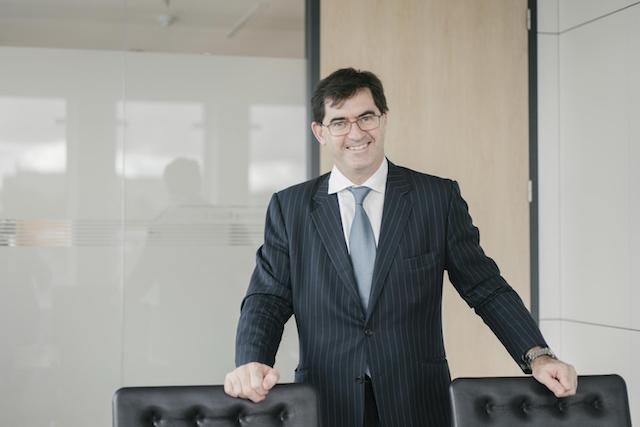Net assets in Luxembourg real estate funds were 19.7% higher in August 2018 than at the end of 2017, says the regulatory agency CSSF. Already, this figure is a couple of points higher than the average annual increase in the five years to 2017, and could challenge the recent record of 26% reported in 2015. The total value of assets under management at 31 August (€69bn) is about three and a half times the 2008 figure. Although this total represents less than 2% of the total for the whole Luxembourg fund industry as a whole at the end of August, this is a significant, high value-adding niche for the country.
Meeting demand
This is a maturing market, and the principal concern appears to be how to grow fast enough to meet investor need. “Markets are still strong as there has been continued strong demand for long-term investing options for a number of years,” said Keith Burman, a partner with Management Plus and co-chair of the Association of the Luxembourg Fund Industry’s Reif subcommittee. Fund managers find it relatively easy to drum up business, as investors are keen to get involved, but there can be a lack of investment opportunities. To a large extent, this is down to fund managers creating attractive products and demonstrating a track record.
Brexit is a contributory factor. New funds seeking continued access to investors across the continent need a base in one of the EU27 member states, and Luxembourg or Ireland are obvious choices. But this is far from being the main driver. Rather, it’s a question of fund managers putting more supply on the market to satisfy demand for products that promise attractive investment returns and offer risk diversification.
Reforms have helped
It also helps that Luxembourg has built the necessary expertise, and offers a tried and tested regulatory regime and a well-designed suite of investment vehicles. It’s been five years since the SCSp (special limited partnership) was introduced, and the global industry has seen this in action, giving managers the same flexibility as they are used to in English-speaking jurisdictions. Then, there is the reserved alternative investment fund (Raif) which, as well as hastening speed to market, has added greater flexibility, enabling changes to be made swiftly over time.
These reforms certainly helped the recent boom in this sector, which gathered pace after the SCSp was introduced in 2013. Nevertheless, Luxembourg’s original alternative vehicles--such as the specialised investment fund (Sif)--are still useful and are facilitating innovation. “Open-ended core funds used to be rare, but we’ve seen a number of these and this is a new trend for Luxembourg,” Burman said. These funds can issue new shares to attract fresh investment over a fund’s lifespan which can extend to several decades. For long-term commitments like these, investors often appreciate a regulated structure like the Sif.
Increasingly common are “blind-pool funds” in which a fund is located in one jurisdiction with capital from various countries. Increasingly, funds will acquire or identify a property first, and then involve investors, either directly or through an asset manager. No two building projects are identical, and there are many ways to attract investment. Tax and corporate structuring questions need to be taken into account, and a range of regulatory tools are required to match. Of course, this requires knowledge of different countries’ legal environments to correctly structure the investment vehicle.
One disappointment has been that demand for infrastructure funds has not taken off as many in the industry had hoped. When raising investment for major road, rail, air transport, etc., projects, “most are club deals with a number of big investors who organise a joint venture, rather than through a fund,” Burman noted. Often managers and investors find these structures to be less complex than a fund structure, not least from a regulatory perspective. There are several major infrastructure funds, but on the whole, they have not taken off in a big way.
Europe-focused
The Luxembourg Reif industry is mainly focused in Europe, both in terms of investments and investors. A 2017 survey into the sector conducted by Alfi found 81% of investors in funds surveyed were based in Europe, with the rest from the Americas and Asia-Pacific region. As for projects supported, 79% were in Europe, 6% global and 5% from Asia-Pacific. As for the strategies, 40% were multi-sectoral, 15% invested in residential and 10% in office buildings.
The near future looks bright, even if there are increasing concerns that assets are becoming relatively expensive. The analysts Preqin said in their “Quarterly Real Estate Update” in July that global “private equity real estate deal activity has fallen for a second consecutive quarter in 2018”, but that activity this year is likely to be on a par with that of 2015 and 2016. However, they found that of the fund managers they surveyed, a majority are concerned about property valuations. “In response, fund managers might be shifting towards smaller deals,” Preqin said, adding that they’ve seen a move towards residential real estate which is seen as “currently presenting the best opportunities”.
Given this cautious optimism, Luxembourg growth could indeed beat the recent record for annual growth in this sector. “I don’t see why things should change,” said Burman. “There are concerns about how long the current cycle can continue, but if there is a correction, traders will react as they always do.”
